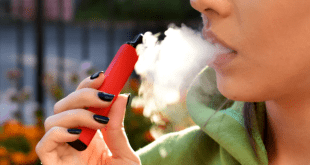Incense sticks glowing in prayer corners and use of air fresheners to spray synthetic fragrances to cover the smell of oil and spice are common in Indian homes. These may be part of our cultural or domestic identity, but medical findings suggest they could be silently damaging our lungs, especially those of non-smokers.
Research carried out worldwide highlights that indoor air pollution from incense, cooking fumes, and air fresheners may increase the risk of lung damage and even cancer, especially among non-smokers, thus raising serious health concerns.
A study published in January 2022 in the International Journal of Environmental Research and Public Health studied the impact of indoor pollutants. By analyzing lung fluid samples of lung cancer patients and healthy individuals, the researchers found that habitual cooking and incense burning increased the risk of lung adenocarcinoma. Among non-smoking women, the risk was especially high, with an over five-fold increase due to cooking and a six-fold increase due to incense burning.
The study identified chemicals such as naphthalene, ethylbenzene, and o-xylene, which are commonly found in incense and cooking fumes, as the main pollutants which accumulate inside the lungs and cause damage.
Dr. Arun Kumar Giri, Director-Surgical Oncology, Aakash Healthcare, said: “We are seeing lung inflammation and early damage even in non-smokers. In many of these cases, the patient is regularly exposed to incense smoke, cooking fumes without exhaust systems, and scented sprays. These are not harmless.”
A review study, published in October 2021 in Frontiers in Public Health, found that more particulate matter per gram is generated by incense compared to cigarettes and contains toxic compounds that can have a direct impact on respiratory and cardiovascular systems.
Dr. Ruchi Singh, HOD & Senior Consultant Radiation Oncology, Asian Hospital, Faridabad, explains: “Indian cooking methods like deep-frying, tadka, and high-heat oil usage produce harmful chemicals. Without proper ventilation, these pollutants settle in the lungs and can cause chronic conditions.”
Modern air fresheners also release chemicals like formaldehyde and phthalates, known to irritate the respiratory tract with long-term exposure.
Burning incense is part of daily rituals in Indian culture. However, their excessive use and when used in enclosed space poses major health risk
Dr. Arun Kumar Giri, noted: “During festivals or long pujas, the air becomes saturated with smoke. This can harm young children, the elderly, and even pets. We urge families to limit usage and ensure fresh air circulation.”
Dr. Aakaar Kapoor, CEO, & Lead Medical Advisor, City Xray Scan & Clinic, Delhi, said, “We often find early signs of lung stress or damage in CT scans of patients who never smoked. Many of them reveal years of exposure to incense and poor kitchen ventilation.”
The evidence, though based on studies outside India, aligns closely with Indian lifestyles. With indoor air quality now recognized as a major health factor, simple changes, like using chimneys in kitchens, cutting down on incense use, and ventilating homes, can protect families.
For a country where culture and health are often intertwined, awareness might be our most powerful remedy, said Dr. Giri .
 Newspatrolling.com News cum Content Syndication Portal Online
Newspatrolling.com News cum Content Syndication Portal Online







